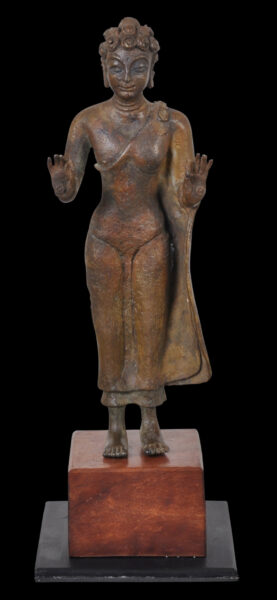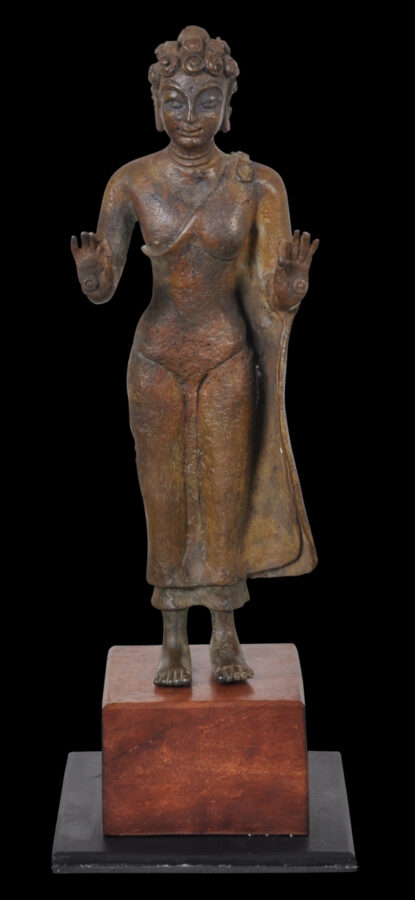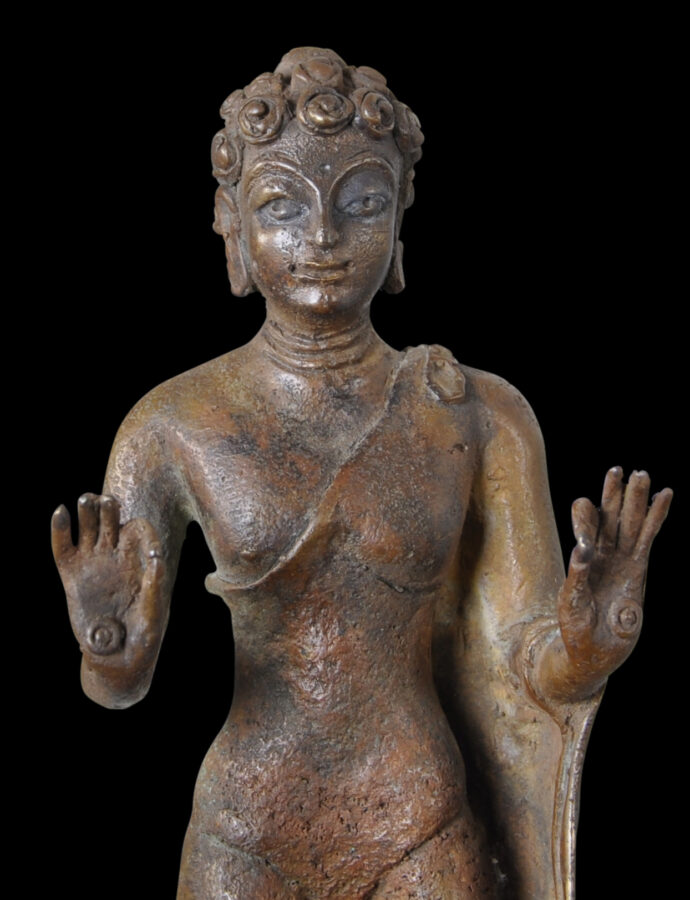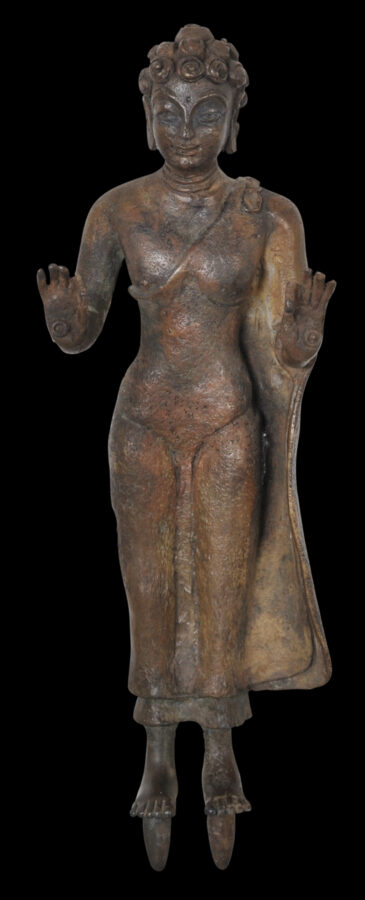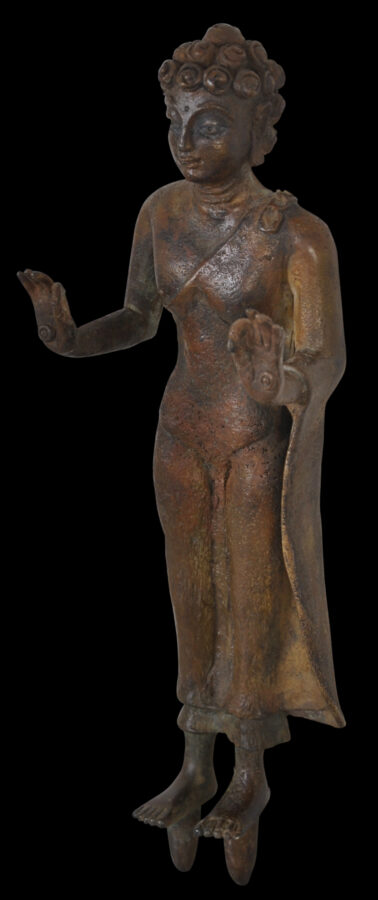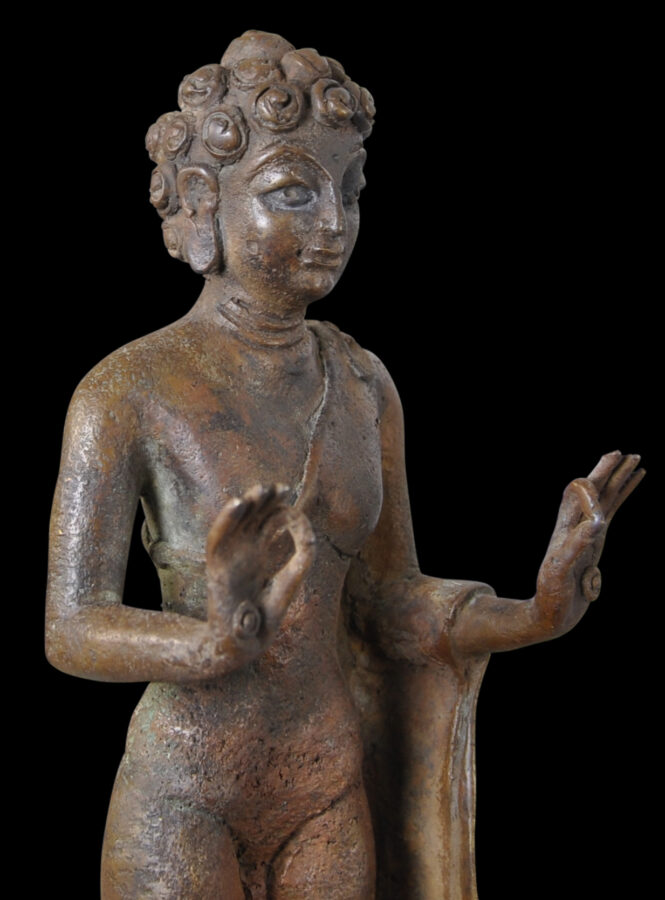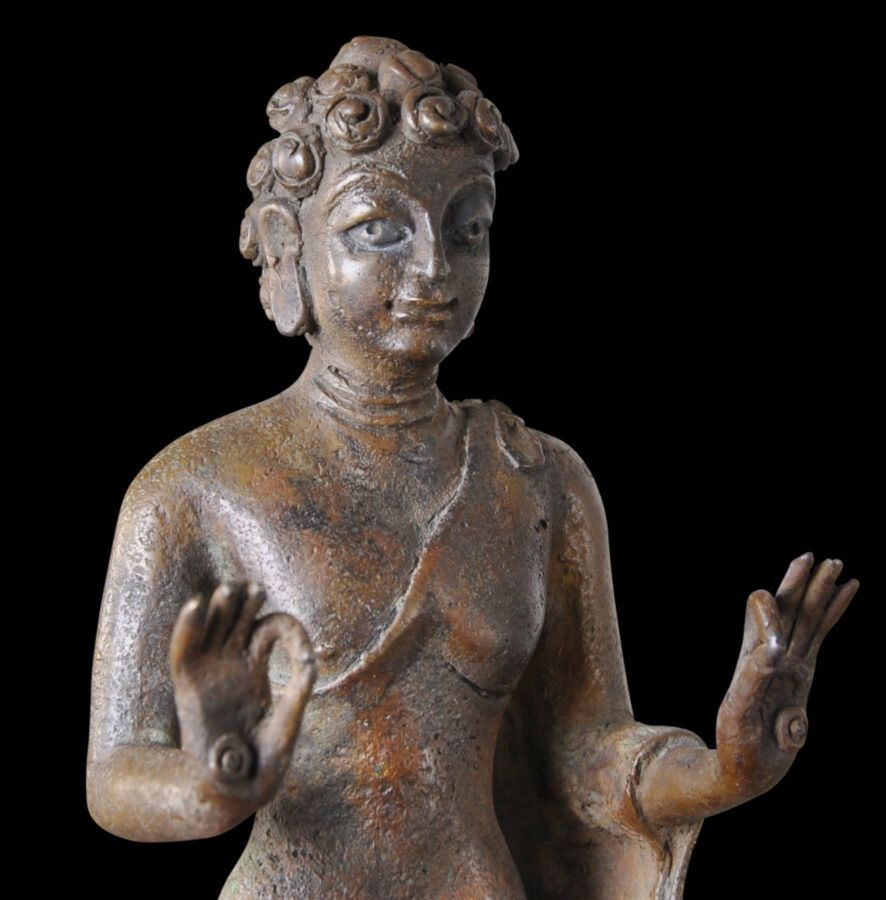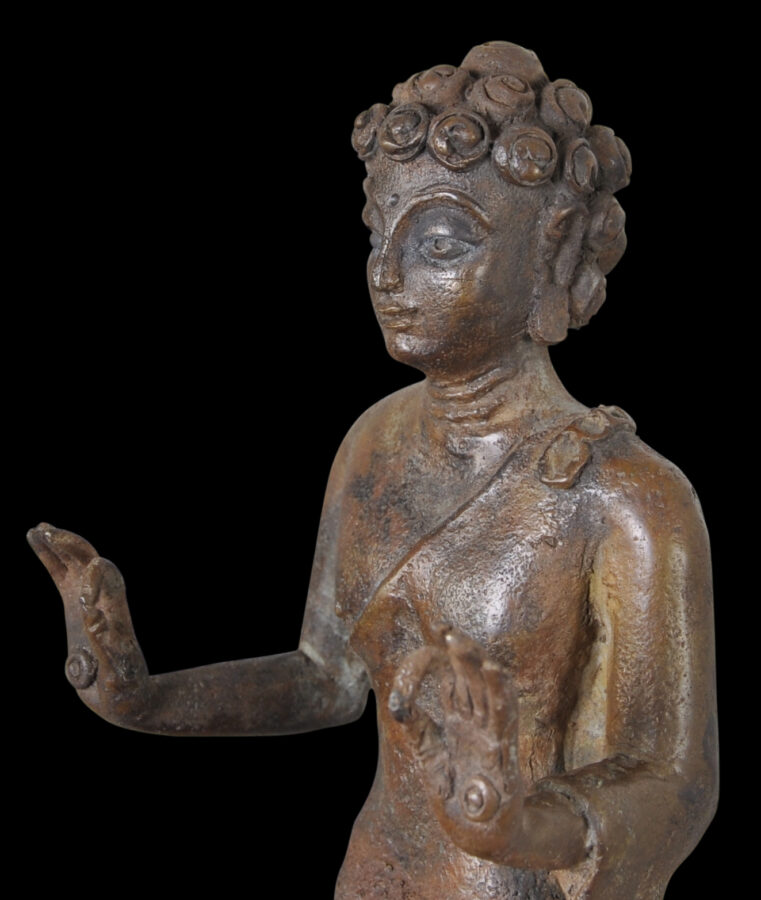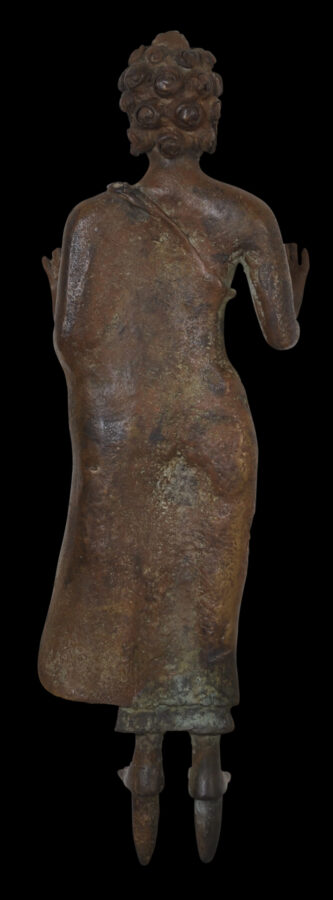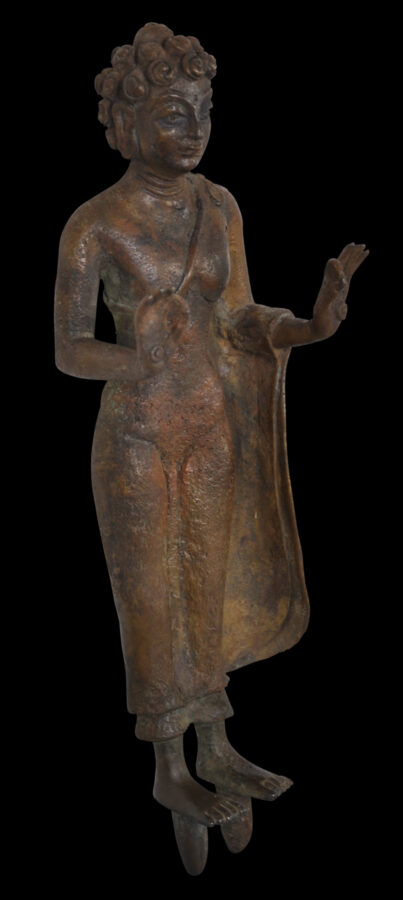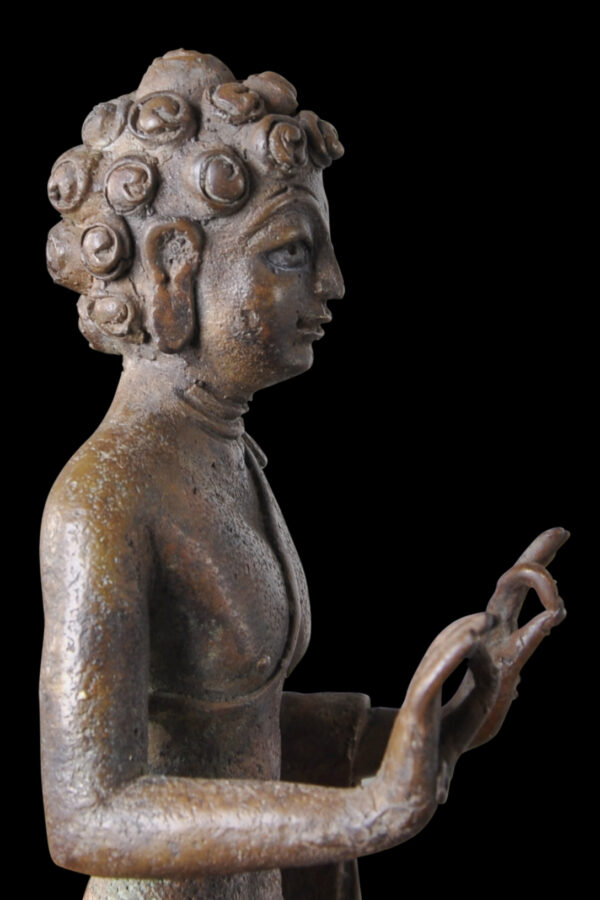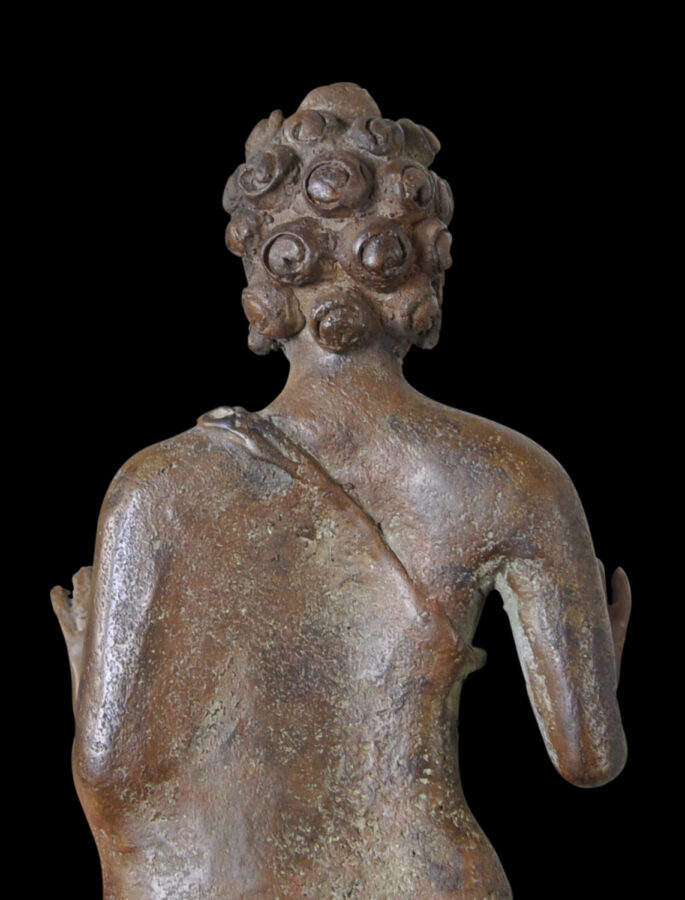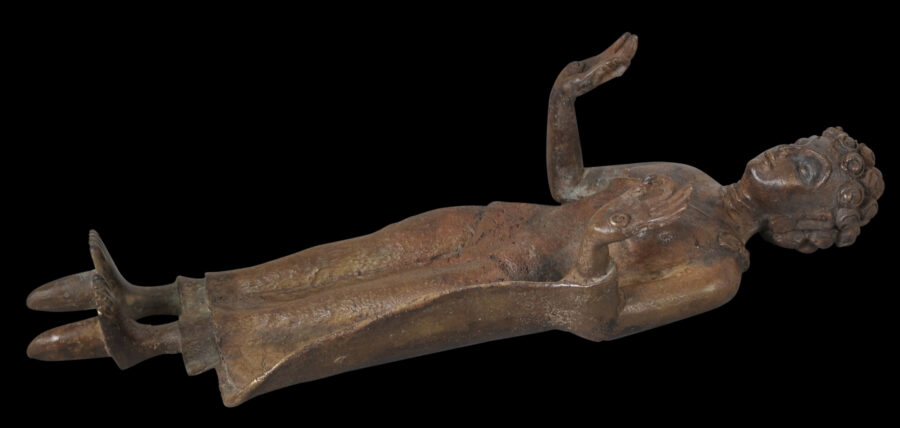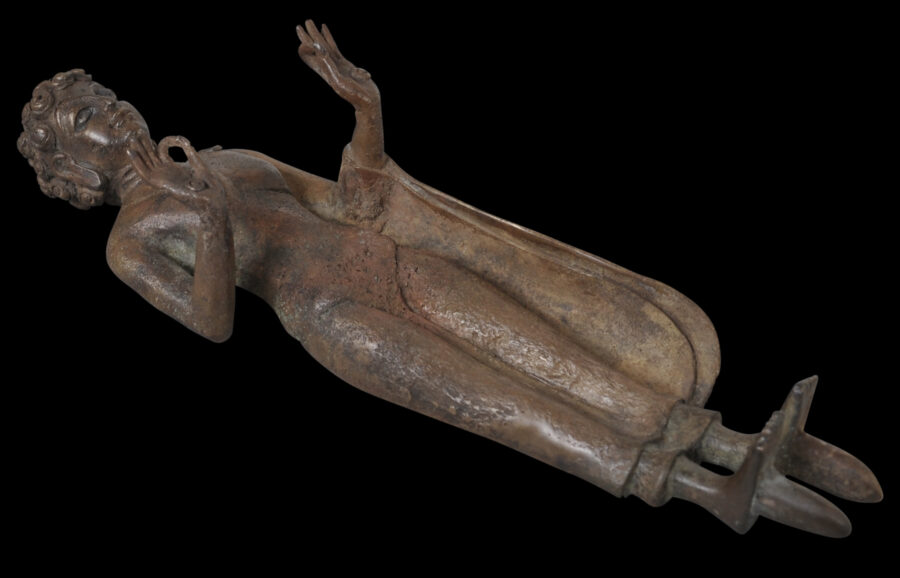This rare, early and beautiful standing Buddha likely dates to 7th-8th century Southeast Asia, most probably from the Malay proto-type kingdom of Srivijaya which encompassed Sumatra and the Malay Peninsula.
Cast in bronze, the eyes and the strong facial features with their somewhat sharp angles, indicate North Indian influence. The double vitarka mudra – both hands raised in the exposition or teaching posture, is typically seen in Mon or Dvaravati buddhas of this period found in Thailand. Indeed, considerable innovations in religious iconography were developed during the Mon-Dvaravati period, of which the holding of both arms aloft is one. In India, the gesture was confined to the right hand only.
The prominent hair curls are another notable aspect, and almost recall that on Gandharan sculpture from northern India with its early Greek influence. These are mirrored by spirals on the palms of both hands. There is a low, rounded usnisha or cranial protuberance. Standing Buddha images with particularly large and loosely spaced hair curls dating to the 6th century have been found on the Malay Peninsula (see Guy, 2014, p. 75) for examples. These were found in Kedah state, just across the Straits of Malacca from Sumatra.
The Buddha’s robe covers the left shoulder, with a knotted flap of the robe rising up over the left shoulder. The robe is also draped over the Buddha’s left arm so that it swishes out. This rendering is particularly synonymous with Southeast Asia. The heavy hem of the robe crossing the chest and back, and the fold running from the right ankle to the left hand are characteristics seen on many early Southeast Asian standing Buddhas which seem to derive from Indian prototypes.
The earlobes are elongated and there are three folds or creases on the neck.
The height of the example here is substantial for an early Southeast Asian bronze, and this gives a real presence to the sculpture.
The undersides of the feet have been cast with lugs which suggests that the image was intended to fit into a base, or was part of a larger image group.
Buddhist bronzes from this period were also transported along the trade routes from both North and South India by Brahmanic scholars and monks intent on spreading Buddhism. Such ‘missionary’ bronzes have been found in Southeast Asia where clearly they influenced the development of local styles. The earliest influence from India is believed to have come during the first to the 7th centuries, from such scholars and monks invited to travel from India by indigenous coastal rulers wishing to have their power and legitimacy sanctified. These scholars were able to introduce magical rites so that the position of the rulers could be elevated to that of god-kings. Indian mythology and iconography was introduced to provide the deification measures with better context, and the material culture of the coastal states was reshaped as a consequence.
The example here has a varying brown-green-grey patina. It is intact and without repairs. It stands on a custom-made wooden stand.
References
Fine Arts Department, Visitors Guide to the Nakhon Si Thammarat National Museum, 2000.
Fontein, J., et al, The Sculpture of Indonesia, National Gallery of Art, Washington, 1990.
Guy, J., Lost Kingdoms: Hindu Buddhist Sculpture of Early Southeast Asia, Metropolitan Museum of Art, 2014.
Hardiati, E.S. & P. ter Keurs (eds.), Indonesia: The Discovery of the Past, KIT Publishers for De Nieuwe Kerk, Amsterdam, 2005.
Kempers, A.J.B., Ancient Indonesian Art, CPJ ven der Peet (Amsterdam), 1959.
Krairiksh, P., The Roots of Thai Art, River Books, 2012.
Leigh, B., The Changing Face of Malaysian Crafts: Identity, Industry and Ingenuity, Oxford University Press, 2000.
van Lohuizen-de Leeuw, J.E., Indo-Javanese Metalwork, Linden-Museum Stuttgart, 1984.
National Museum Volunteers Bangkok, Treasures from the National Museum Bangkok: Seleted by the National Museum Volunteers Group, NMV Bangkok, 1987.
Sukhasvasti, S., South and Southeast Asian Sculpture from a Private Collection, Rian Boon Press, 2003.
Woodward, H.W., The Sacred Sculpture of Thailand: The Alexander B. Griswold Collection – The Walters Art Gallery, Thames & Hudson, 1997.


